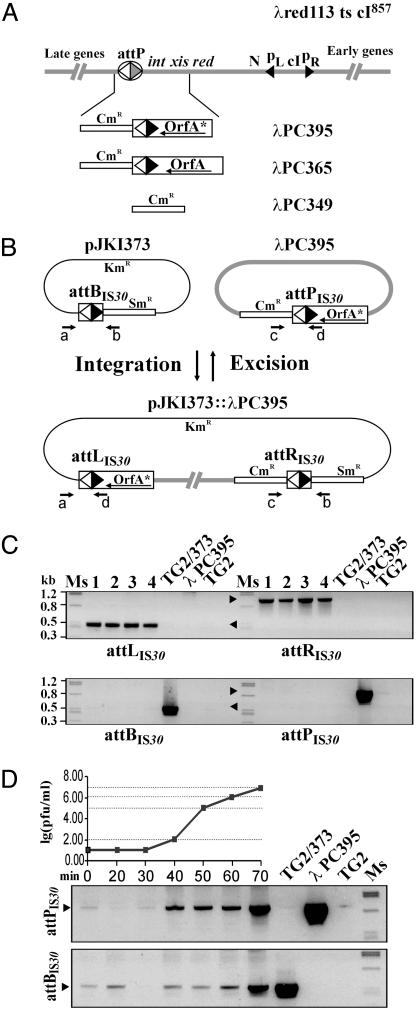Fig. 2.
Integration and excision of λPC395. (A) A schematic map of λ (35) and the IS30-based systems that substitute its site-specific system. λPC395, λPC365, and λPC349 carry the shortened IS30 ORF-A* (amino acids 40-383), the whole ORF-A, or the CmR gene alone, respectively. (B) Integration and excision of λPC395 in the target plasmid, pJKI373. Thin line, plasmid backbone; thick line, λ DNA; open boxes, resistance genes as indicated; black and white triangles, IR-IR junctions designated as att sites according to their location. Primers used for detecting att junctions are indicated as a-d (see Materials and Methods). (C) PCR detection of integrated λPC395. Samples 1-4 (independent isolates) gave no signal for attBIS30 and attPIS30 (arrowheads), but yielded PCR products indicative of attLIS30 (base pairs 500) and attRIS30 (base pairs 940). TG2/373 and λPC395, positive controls for attBIS30 (base pairs 534) and attPIS30 (base pairs 890); TG2, negative control. (D) Excision of λPC395 during induction of a lysogen strain. The excision was assayed by titration of phages and PCR detection of attBIS30 and attPIS30 every 10 min. Control PCRs for attBIS30 and attPIS30 were as in C.

